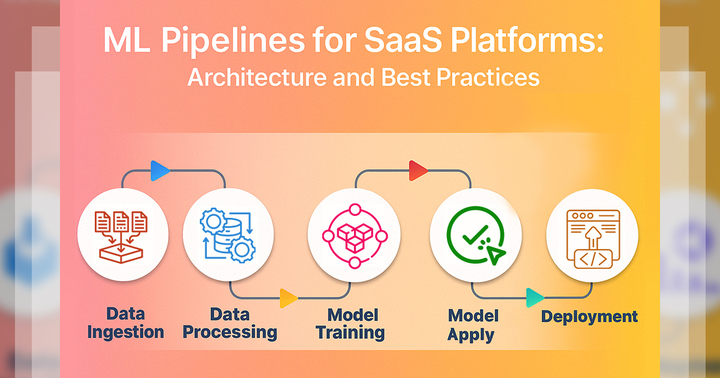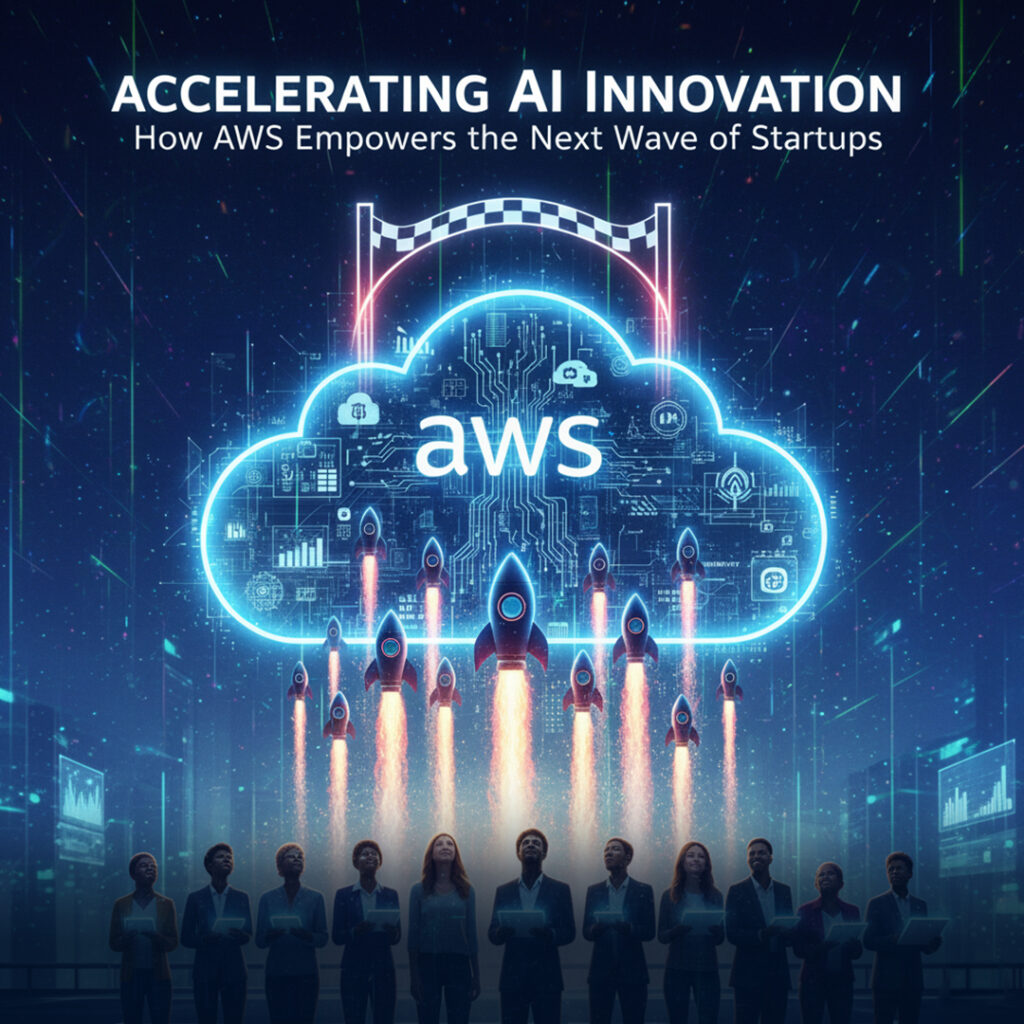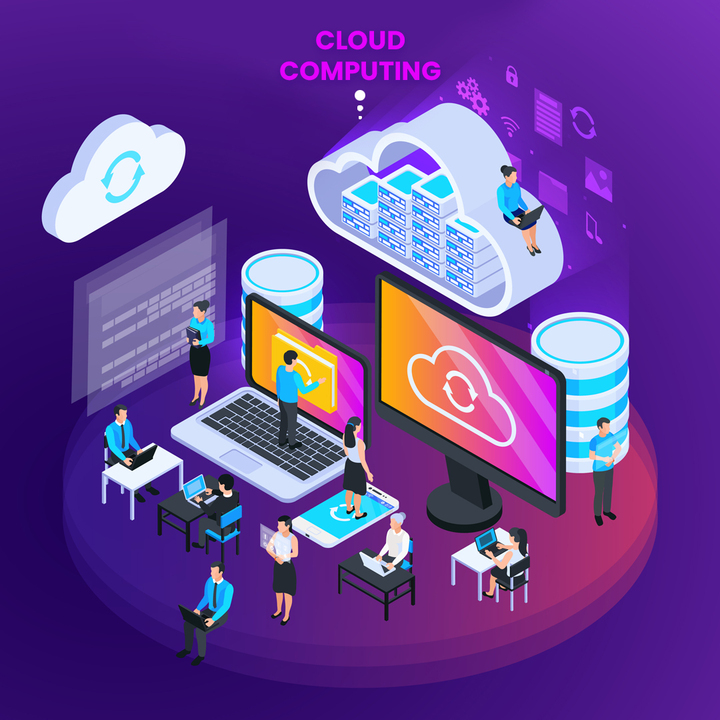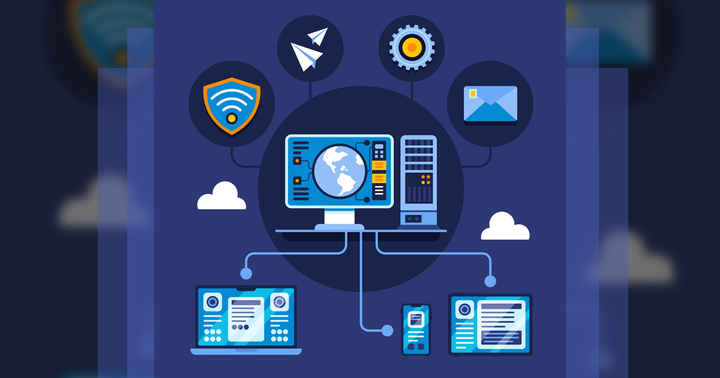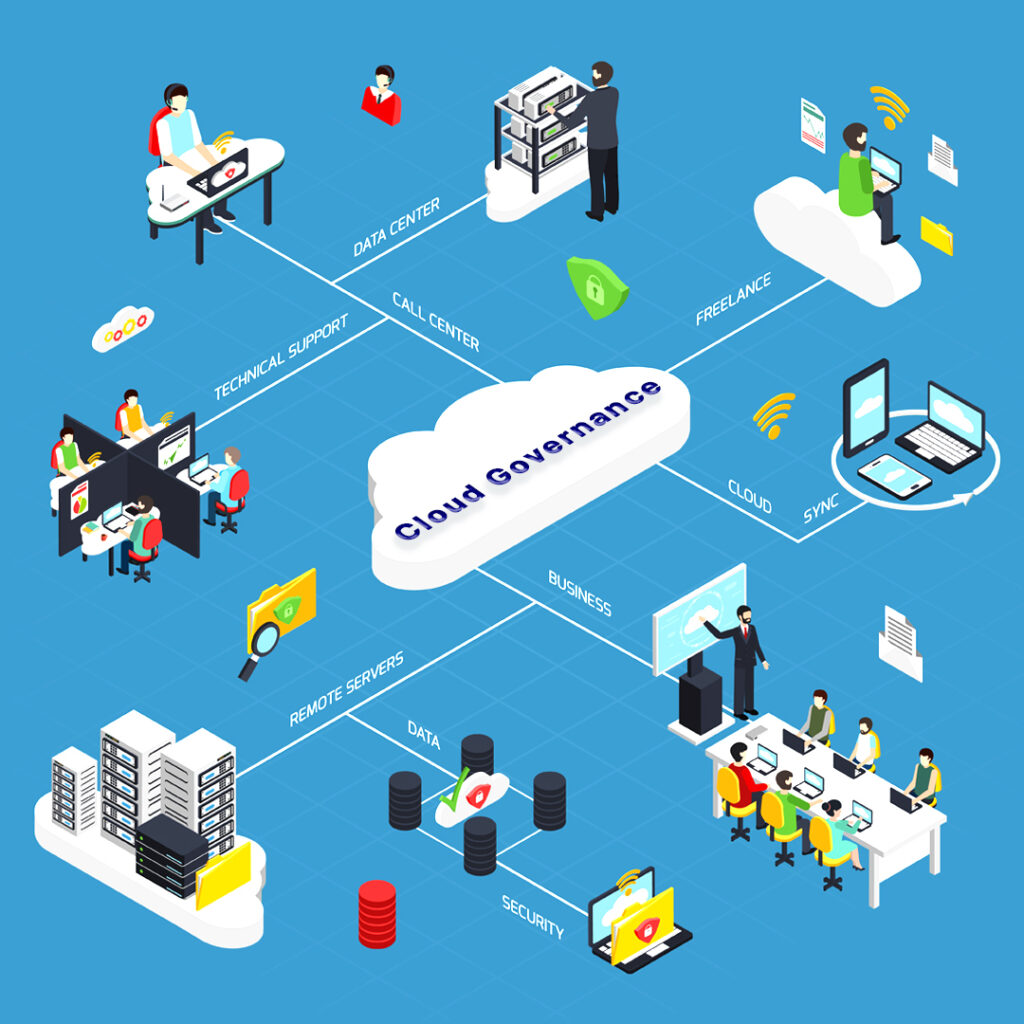In today’s digital world, things change fast. One day, your web app works perfectly for a few hundred users. The next day, a viral post or a big event sends millions of users your way—and suddenly, your app crashes. That’s where scalability comes in. It’s not just a fancy tech word—it’s the foundation that helps your app grow without falling apart.
If your app can’t handle traffic spikes, data overload, or users from around the world, you’ll lose them. Even great features won’t save an app that’s too slow or keeps going down. The truth is, the best apps today are not just cool—they’re built to scale.
This blog guide will help you understand how to make your web app scalable from the start. You’ll learn real strategies, see actual case studies, and discover common mistakes to avoid. You’ll also get tips from engineers who’ve been through the tough parts and made it out stronger.
Whether you’re building your first app or improving an old one, this guide will help you stay fast, reliable, and ready for anything the internet throws at you.
1. Why Scalability Matters More Than Ever
In 2023, people want apps to load in under 2 seconds. If your app is slow or crashes, it can cost a business around $4.4 million a year. That’s a lot! When you build with scalability, your app can stay fast, handle more users, and keep running smoothly, even when things get really busy.
a. Handle traffic spikes (e.g., viral campaigns, seasonal surges)
- You know how sometimes a post or product goes viral and suddenly thousands of people visit a website at once? If your app isn’t scalable, it might slow down or even crash. A scalable app can handle sudden traffic spikes without breaking. So whether it’s Black Friday or a TikTok trend, your app stays fast and reliable for every user who clicks or signs in.
b. Support growing datasets without performance loss
- As your app collects more users, messages, or pictures, the data it stores grows a lot. A scalable system lets you keep adding this data without making the app slower. That means no matter how much info your app stores—like videos, orders, or posts—it keeps running smoothly. You don’t want your app to lag just because it’s getting more popular, right?
c. Expand to new regions with low latency
- Let’s say your app starts getting users from other countries. If your servers are only in one place, far-away users may face high latency, which means long loading times. A scalable system can expand to new regions, placing servers closer to users. This helps your app respond faster, no matter where someone lives—whether it’s New York or Tokyo. That makes your users happier and keeps them coming back.
d. Maintain uptime during failures
- Sometimes, parts of a system fail, like a server crashing or a network going down. A scalable system is built with redundancy, meaning it has backups ready to take over instantly. That way, your app stays online (maintains uptime) even when something breaks. You don’t want your users seeing an error message just because one server failed. With scalability, your app can keep going no matter what.
The Cost of Ignoring Scalability:
a. Dropbox’s Early Growing Pains
- Back in 2008, Dropbox ran a super successful referral program—tons of people signed up fast. But their servers couldn’t handle the load and started breaking. Since they didn’t have scalability from the start, it took them months to fix things. They had to rebuild everything using a distributed system that could grow with more users. If you don’t plan for growth early, your app can crash when it suddenly becomes popular.
b. Twitter’s “Fail Whale” Era
- During the 2010 World Cup, millions of people tweeted at once, and Twitter couldn’t keep up. The app kept crashing, showing the “Fail Whale” image whenever it went down. That was embarrassing and frustrating for users. Twitter had to rebuild its backend using distributed messaging queues to handle huge traffic spikes. If you skip scalability, you’ll face outages when your app becomes a hit, which is exactly what happened to Twitter back then.
2. Core Principles of Scalable Web Architecture
2.1 Horizontal vs. Vertical Scaling
a. Vertical Scaling (Scaling Up)
- When you use vertical scaling, you upgrade your server by adding more CPU or RAM. It’s a simple and quick fix if your app is slow. But there’s a catch—it’s expensive, has limits, and if that one server fails, everything can go down. So while it works for small apps, you can’t rely on it forever. It’s like trying to carry more stuff by just getting a bigger backpack every time.
b. Horizontal Scaling (Scaling Out)
- With horizontal scaling, instead of upgrading one server, you add more servers to share the work. It’s cost-effective, fault-tolerant, and elastic—you can grow as needed. But to do it right, your app needs a load balancer to spread traffic and should be stateless, meaning no server holds special data. Big cloud platforms like AWS or Google Cloud make this easy and cheap. So it’s smart to start using this method early on.
2.2 Stateless Design
- A stateless design means your app doesn’t keep session data (like login info or preferences) on the server itself. Instead, it stores that data in an external system like Redis. This way, you can add or remove servers anytime without messing up the user’s experience. It makes your app easier to scale and more reliable. Imagine if every server had to remember your info—switching servers would log you out or crash the app. With stateless design, that doesn’t happen. A great example is Netflix. They use stateless microservices to support over 250 million users worldwide. This lets them grow fast and stay online, even when millions of people are watching shows at the same time.
2.3 Database Optimization
a. Sharding
- Sharding means splitting your database into smaller pieces, often by things like user region. So users in Asia and Europe might use different database shards. This makes your app faster and easier to scale because each shard handles less data. Instead of one big database doing all the work, you have smaller chunks working together. It’s like dividing homework among friends—you finish quicker and don’t overload one person.
b. Read Replicas
- Read replicas are extra copies of your database used only for reading data, not writing. This helps take pressure off the main database. For example, if thousands of users check their profiles at once, those requests go to the replicas. Your main database stays focused on updates and writes. It’s a smart way to speed up your app and avoid slowdowns when lots of people are just viewing information.
c. Caching
- Caching stores frequently used data in fast memory tools like Redis or Memcached. This means your app can get info super quickly without always asking the main database. Think of it like saving answers to common questions so you don’t have to look them up every time. It makes things much faster, especially when the same data is used often, like user profiles or product lists.
d. Pitfall Alert: Over-indexing
- Adding too many indexes to speed up searches can actually make your writes slower. Every time you update the database, it has to update all those indexes too. So be careful—not every column needs one. Always monitor query performance to keep your database running smoothly. It’s about finding the right balance between speed for reading and performance for writing.
2.4 Use CDNs for Static Assets
- A Content Delivery Network (CDN) stores static files like images, CSS, and JavaScript on servers all around the world. So when someone visits your app, the files load from the closest server, making everything faster and reducing latency. You don’t have to wait for files to travel across the globe. A real example is Shopify—they used Cloudflare’s CDN and cut their load times by 50%. That means happier users and fewer people leaving the site.
2.5 Asynchronous Processing
- Asynchronous processing means handling time-consuming tasks, like sending emails or resizing images, in the background instead of making the user wait. You use tools like message queues (such as RabbitMQ or Kafka) to send these jobs to background workers. This keeps your app fast and responsive. For example, Instagram uses a tool called Celery to handle millions of image uploads daily without slowing down the app. It’s like handing off boring chores to someone else so you can keep moving quickly.
2.6 Monitoring & Auto-Scaling
- You need to keep an eye on how your app is doing. Monitoring tools like Prometheus and AWS CloudWatch track things like traffic, errors, and server usage. When these tools notice a traffic spike, they can auto-scale, which means they automatically add more resources like servers or memory. This helps your app stay fast and stable, even when tons of people visit at once. You don’t have to do it manually. It’s like having a smart assistant who sees when things get busy and brings in help before anything breaks or slows down.
3. Real-World Scaling Lessons from 3 Projects
Case Study 1: Social Media Platform Scaling 10x
Challenge:
- A small startup built a social app that suddenly got really popular, growing from 10,000 to 100,000 daily users in just 3 months. But their app had a monolithic backend, meaning everything was packed into one big system. It couldn’t keep up with all the API requests, so the app started lagging or even failing. Since it wasn’t built to scale, users had a bad experience. This shows how fast growth can break apps without good architecture.
Solution:
a. Split the monolith into microservices (user auth, posts, notifications)
- They broke the monolith into smaller parts called microservices. Each service handled a specific job, like user authentication, posts, or notifications. This made the app easier to manage, scale, and fix when something went wrong. Instead of one giant system, you now have independent parts working together. So if one part crashes, the others can keep running. It’s like turning a one-man band into a team—everyone focuses on their job and works faster.
b. Introduced Redis for session caching
- They added Redis to store session data in a fast, external memory system. This is called caching. It helps users stay logged in and makes the app respond faster because it doesn’t always ask the database for info. Instead of searching for your data each time, Redis gives it back almost instantly. It’s like keeping your most-used tools right on your desk instead of digging through drawers every time.
c. Migrated to Kubernetes for auto-scaling
- They moved their app to Kubernetes, a platform that helps you run, manage, and scale apps automatically. When more users show up, Kubernetes adds more containers (small app pieces) to handle the load. When traffic goes down, it removes them to save money. That’s called auto-scaling. It’s like having a smart system that adds more buses when the crowd grows and removes them when it’s quiet, so everyone always gets a seat.
Result:
- After all the changes, the app’s latency—how long it takes to respond—dropped from 4 seconds to just 200 milliseconds. That’s 20 times faster, so users saw pages and posts almost instantly. Even better, the costs didn’t go up. They stayed flat because smart tools like Redis and Kubernetes made everything more efficient. So the app handled way more users, ran faster, and didn’t waste money. That’s the power of good scaling and smart design!
Case Study 2: E-Commerce Survival During Black Friday
Challenge:
- An online retailer was getting ready for Black Friday and expected 5 times more traffic than usual. But during checkout, their database started running into deadlocks—that’s when different processes get stuck waiting on each other, and nothing moves. It caused big slowdowns and even crashes, which meant users couldn’t finish their purchases. That’s a huge problem during sales! Their system wasn’t ready to handle such a spike in traffic, especially at the most important moment.
Solution:
a. Implemented database read replicas
- They added read replicas, which are extra copies of the database used only for reading data. This helped take pressure off the main database, especially when lots of people were browsing products. Now, the main database could focus just on checkout and updates, while the replicas handled lookups. It’s like having extra workers just to answer questions so the main cashier can check people out faster and avoid deadlocks.
b. Added rate limiting and queueing for checkout
- They used rate limiting to slow down how many people could hit checkout at once and added a queue to handle requests in order. This stopped the system from being overloaded all at once. Instead of letting everyone push through at the same time, it became an organized line. That kept the system stable, avoided errors, and made sure each user got their turn without breaking anything.
c. Pre-warmed AWS EC2 instances before the sale
- Before the sale started, they pre-warmed AWS EC2 instances, which means they started up extra servers ahead of time. This way, when the traffic spiked, those servers were already running and ready. It saved time and avoided slow starts. It’s like heating up your car before a road trip—you’re ready to go full speed the moment things get busy. This helped the app stay fast and reliable during the rush.
Result:
- Thanks to the smart changes, the app had zero downtime during the huge Black Friday traffic surge. That means the site never crashed or slowed down, even with tons of people shopping at once. Everything worked smoothly—from browsing to checkout. As a result, the store made over $2 million in sales. That’s the power of being prepared, using replicas, queues, and extra servers. When your system scales right, you turn traffic into real money without stress.
Case Study 3: SaaS App’s Global Expansion
Challenge:
- A US-based SaaS tool expanded to Asia, hoping to attract more users. But they ran into a huge problem: latency. The app was too slow for users across the world because it was mainly built for US-based users. When users in Asia tried to use it, everything took longer to load, and they got frustrated. As a result, many users started leaving the app, which hurt the business. It became clear they needed to fix the speed issue fast.
Solution:
a. Deployed regional AWS servers in Tokyo and Singapore
- They added AWS servers in Tokyo and Singapore to bring the app closer to users in Asia. By having regional servers, the app could handle requests from those areas much faster. This lowered latency and made the app more responsive for users. It’s like setting up stores in different cities instead of making everyone travel to one place—they get what they need quicker.
b. Used DynamoDB Global Tables for low-latency data access
- They used DynamoDB Global Tables, a special feature that stores data in multiple regions. This way, users in Asia could access data from a local server, reducing lag. It provided low-latency data access no matter where users were, keeping the app quick and smooth. It’s like having a fast, reliable library branch in every city so you don’t have to wait for books to arrive from far away.
c. Optimized images via WebP and lazy loading
- They optimized images by using the WebP format, which makes them smaller without losing quality. They also added lazy loading, meaning images only load when you scroll down to them. This saved time and bandwidth because users didn’t have to wait for the whole page to load. It’s like letting users peek at a few pages of a book instead of making them flip through every page before reading.
Result:
- After making the changes, page load times in Asia dropped from 8 seconds to just 1.5 seconds. That’s a huge improvement! The app became much faster for users, reducing frustration and keeping them engaged. With the regional AWS servers, DynamoDB Global Tables, and image optimizations, the app could handle traffic efficiently and load quickly. This made users in Asia stick around instead of leaving, improving their overall experience and boosting satisfaction.
4. Common Scalability Pitfalls (And How to Dodge Them)
4.1 Premature Optimization
- Don’t try to make your app perfect right from the start. Premature optimization happens when you focus too much on small performance details early on. Instead, build your app with a Minimum Viable Product (MVP) that solves your core problem. Then, as users grow and traffic increases, you can scale and improve it step by step. Over-engineering too soon can waste time and resources. It’s like trying to build the perfect house before knowing how many rooms you actually need.
4.2 Ignoring Database Bottlenecks
- Don’t ignore how your database handles requests. Issues like N+1 queries can slow down your app when it makes unnecessary multiple queries for related data. Use eager loading to fetch data in fewer queries. Also, set up connection pooling, which lets multiple requests reuse existing database connections instead of opening new ones each time. This makes the database work faster and reduces strain. It’s like ensuring your checkout line at a store is always ready for customers, without having to wait for a new cashier to open.
4.3 Insufficient Load Testing
- Don’t wait until users flood your app to see if it works under pressure. Load testing simulates real user traffic using tools like JMeter or Locust. This helps you find out how your app performs with thousands (or millions) of users before it’s too late. You can test how much stress your system can handle and fix any weak spots. It’s like taking a car for a test drive before a long road trip—so you know if it’ll break down or run smoothly.
4.4 Over-Reliance on Third-Party Services
- Relying too much on third-party services like payment gateways or social media logins can hurt you if they fail. Always have a backup plan or a fallback strategy in place. For example, if a payment gateway goes down, make sure you can still accept payments through another provider. This ensures your app keeps running even if a service you rely on has issues. It’s like having a spare tire in your car—you won’t get stuck if one tire fails.
5. Tools & Technologies for Scalable Apps
- When building scalable apps, using the right tools in each category is essential. For cloud platforms, consider using AWS, Google Cloud, or Azure to host and scale your app. In terms of databases, options like PostgreSQL, MongoDB, or Amazon DynamoDB handle both structured and unstructured data well. For caching, use Redis or Memcached to speed up your app. Monitoring tools like Prometheus, New Relic, or Datadog help track app performance. Lastly, for containerization, use Docker and Kubernetes for easy deployment and management.
| Category | Tools |
|---|---|
| Cloud Platforms | AWS, Google Cloud, Azure |
| Databases | PostgreSQL, MongoDB, Amazon DynamoDB |
| Caching | Redis, Memcached |
| Monitoring | Prometheus, New Relic, Datadog |
| Containerization | Docker, Kubernetes |
6. Future-Proofing Your Architecture
a. Adopt Serverless
- Switching to serverless architecture with tools like AWS Lambda or Firebase helps you handle unpredictable workloads. Instead of managing servers, you just focus on the code. These services automatically scale based on demand, so if your app suddenly gets more users, they handle the extra load without you doing anything. It’s perfect for apps with variable traffic since you only pay for the resources you actually use. It’s like renting a car only when you need it, instead of buying one and maintaining it all year round.
b. Edge Computing
- Edge computing means processing data closer to where your users are, reducing latency. Using tools like Cloudflare Workers, you can run code at edge locations around the world, right near your users. This makes your app faster and more efficient because it doesn’t have to travel far to get to the user. It’s like having a small team of helpers in different cities, making sure tasks are done quickly and locally instead of waiting for one central team to handle everything.
c. AI-Driven Scaling
- With AI-driven scaling, tools like AWS Auto Scaling use machine learning (ML) to predict your app’s traffic and automatically adjust resources accordingly. For example, it can predict when your app will get more traffic, then scale up resources ahead of time. This prevents slowdowns or crashes during traffic spikes. It’s like using a weather forecast to plan your day—you’re always prepared for what’s coming and don’t get caught off guard.
7. FAQs
Q1: When should I start planning for scalability?
- A: You should plan for scalability from Day 1. Even if your app starts small, build it in a modular way. That means you design it in parts so you can grow without rebuilding everything later. This makes it easy to fix or upgrade specific parts as your user base increases. Starting this way helps you avoid major problems when things get bigger. Think of it like building a house with space to add more rooms.
Q2: Can a monolithic app be scalable?
- A: Yes, a monolithic app can still be scalable, but it’s harder. Everything is packed into one big block, so it’s tough to update or grow one part without touching the rest. That’s why many developers switch to microservices, where each part (like login or payments) runs separately. This makes it easier to scale only what needs more power. If your login needs boosting, you don’t have to scale the whole app—just that part.
Q3: How much does scalability cost?
- A: With cloud auto-scaling, you only pay for what you actually use. This keeps your costs low when traffic is light and automatically adds resources when more people use your app. It’s like using a ride-sharing app—you only pay when you take a ride, not for the car all day. This setup is perfect for startups that want to grow without spending a ton of money upfront.
Q4: What’s the biggest mistake when scaling?
- A: The biggest mistake is trying to scale too early. Some people build complex systems before they even have users. That’s like building a stadium before you have a team. Instead, build a Minimum Viable Product (MVP) and focus on solving real user problems. Once people start using your app and traffic grows, then it’s time to scale. Grow based on real needs, not just guesses.
Q5: Do I need a DevOps team to scale?
- A: You don’t need a full DevOps team right away. Most cloud platforms, like AWS or Google Cloud, offer built-in tools to help you scale your app automatically. These tools handle things like load balancing, auto-scaling, and monitoring. But as your app grows and becomes more complex, having a DevOps expert can help you improve performance, avoid issues, and make things run more smoothly.
Conclusion
- Scalability isn’t just a “nice to have”—it’s the difference between an app that thrives and one that crashes when it matters most. If you want your app to grow, handle pressure, and stay fast no matter what, you need to plan for scale from the start. Learn from real-world stories, use the right tools, and avoid the mistakes others have made. The future is unpredictable—but with the right setup, your app won’t just survive, it’ll lead. Build smart, stay resilient, and get ready to handle whatever comes next.


